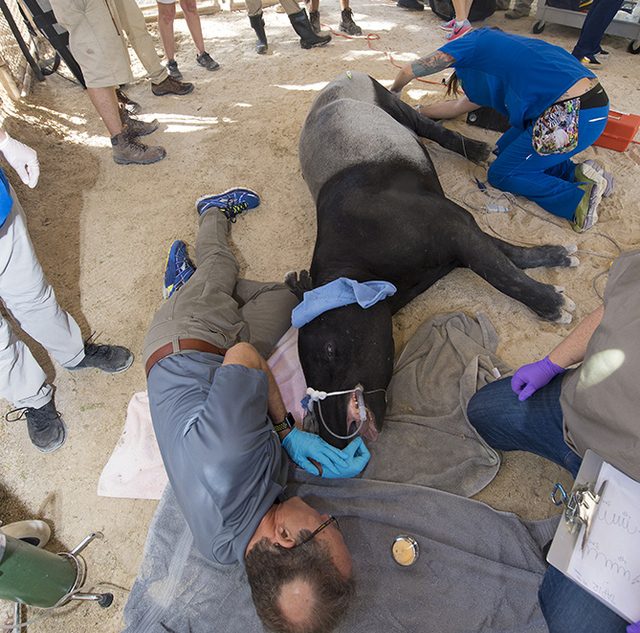
“Gabe,” a 21-year-old endangered Malayan tapir at Zoo Miami, 12400 SW 152 St., recently was immobilized so that he could receive a double root canal on two broken lower canine teeth.
With a life expectancy of approximately 30 years, Gabe is approaching “senior citizen” status and damaged teeth are not an uncommon issue. In the wild, situations like these can lead to serious infection and even death. At the very least, it is very painful. Fortunately, under human care, animals such as Gabe can receive treatment to not only remove and prevent further infection but also eliminate the pain.
With the assistance of Zoo Miami associate veterinarians, Dr. Marisa Bezjian and Dr. Gaby Flacke, the root canals were performed by Dr. Jan Bellows from All Pets Dental and Dr. Elizabeth McMorran, a fourth-year dental resident.
Dr. Bellows was very happy with the result of the procedure stating that he and Dr. McMorran were able to successfully clean out the infection, perform the root canals, and seal the teeth. Though the fractured canines should not need any further work, it is likely that Gabe will need additional treatment in the near future for periodontal disease affecting other teeth. The Malayan tapir is the largest of the five species of tapirs, often exceeding 500 pounds. It is found in the southern parts of Sumatra, Thailand, Myanmar, and isolated portions of the Malaysian peninsular. It is considered endangered due to habitat loss and hunting.
Tapirs are browsers and use their long flexible snouts to feed on a variety of saplings, leaves and other plant materials. They also are excellent swimmers and often are found around bodies of water alongside tropical forests and jungles.
Although it is often confused for an anteater because of its long snout, it is actually a distant relative of the rhinoceros and the horse.






